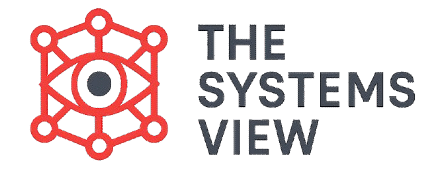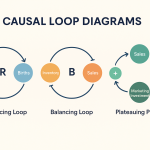We have already learned that a system is a set of connected parts that work together for a purpose. But not all systems are the same. A simple system, like a thermostat controlling a room’s temperature, is easy to understand. A complex system, like a city, an economy, or a large company, is much harder to figure out.
Systems Thinking needs to address complexity, because most of the world’s most difficult problems—like poverty, climate change, or supply chain disruptions—happen inside complex systems.
A complex system is messy. It has many parts that interact in non-obvious ways. This makes it hard to predict what will happen next, and it is why quick, simple fixes rarely work.
The Defining Signs of a Complex System
What truly makes a system complex? Complex systems have specific characteristics that set them apart from simple ones. They often follow hidden rules that are not always clear to the people working inside them.
Too Many Variables to Track
A complex system has a huge number of variables, or parts, that affect each other. Trying to track every single variable is practically impossible. In a large manufacturing company, for example, the variables include the number of employees, the age of the machinery, the different software platforms, shifting customer demand, and the current price of raw materials. This sheer number of interconnected parts means that no single person can hold all the details in their head. The system’s behavior comes from these countless interactions.
Nonlinear Relationships and the “Butterfly Effect”
In simple systems, a small change in one part creates a small, predictable change in another. This is called a linear relationship. In a complex system, the relationship is nonlinear. A small action can suddenly cause a massive, unexpected result—this is often called the butterfly effect.
For example, a new, tiny policy change in a company’s expense report rules might seem unimportant, but it could lead to widespread frustration and a sudden, large increase in employee turnover. Likewise, a huge effort, like doubling a marketing budget, may produce no noticeable change in sales at all. The result is unpredictable and not directly proportional to the effort you put in.
Long and Changing Time Delays
This is one of the most frustrating parts of a complex system. In a simple system, the cause and effect happen close together in time. In a complex system, there are often significant time delays between an action and its result.
A company might invest heavily in new employee training today. The cost is immediate, but the true positive effect (better quality of work, higher customer satisfaction) may not show up for six months to a year. These delays hide the true cause of a problem and often trick people into believing a fix has failed when it is just taking time. People stop the solution before it has time to work, which adds to the confusion.
Boundaries Are Fuzzy
It is hard to draw a clear, solid line around a complex system. Where does your company end and the market begin? Where does the local hospital system stop and the community’s health habits start? In a complex system, the boundaries are fuzzy because the system is constantly interacting with its environment. This means the cause of a problem that looks internal might actually be coming from an external factor, like a shift in social media trends or a change in government policy.
Multiple Feedback Loops
A simple system might have one or two feedback loops. A complex system has dozens of reinforcing and balancing loops all working at the same time. These loops often fight with each other, creating messy behavior that makes it hard to stabilize the system.
For example, a reinforcing loop might be pushing a software company to grow fast (more users lead to more features, which attracts more users). At the same time, a balancing loop (limited number of programmers and increasing complexity of the code) is pulling the system back, slowing down growth and increasing bugs. The overall system behavior is the messy result of these loops fighting for control.
Deep Resistance to Change
Complex systems resist change stubbornly. They are built to maintain a certain state, which is why a logical solution often fails. If you try to push the system in one direction, the powerful balancing loops will push back, often bringing the system right back to where it started. This is known as homeostasis or a system’s ability to self-stabilize. It is why social problems are so hard to fix; even after massive intervention, the system tends to return to its original state.
Frequent Unintended Consequences
Because of all the above factors—delays, nonlinearity, and fuzzy boundaries—complex systems are famous for producing unintended consequences. When you fix one part of the system, it often triggers a reaction in a distant part that you did not expect, creating a brand new problem. For example, a government might try to solve a pollution problem by taxing gasoline. This is intended to reduce driving. But an unintended consequence might be that the poor can no longer afford to get to work, creating a social equity problem.
The Importance of Mapping Complexity
To solve a problem in a complex system, you cannot rely on simple, linear thinking. You must use tools like Causal Loop Diagrams and Behavior Over Time Graphs to map out the connections, delays, and loops.
When you see how complex the system is, you realize that the most powerful solutions are often not the most obvious ones. They are the ones that work with the system’s nature, not against it. By understanding these characteristics, you shift from blaming people for problems to analyzing the system structure that makes the problems unavoidable.
Conclusion
A complex system is defined by its massive number of parts, its unpredictable connections, and the long time delays that separate cause from effect. To work effectively within these messy systems, you must move away from simple cause-and-effect thinking. By recognizing the seven signs of complexity, you can stop just reacting to events and start looking for the underlying structure that creates the system’s behavior.



